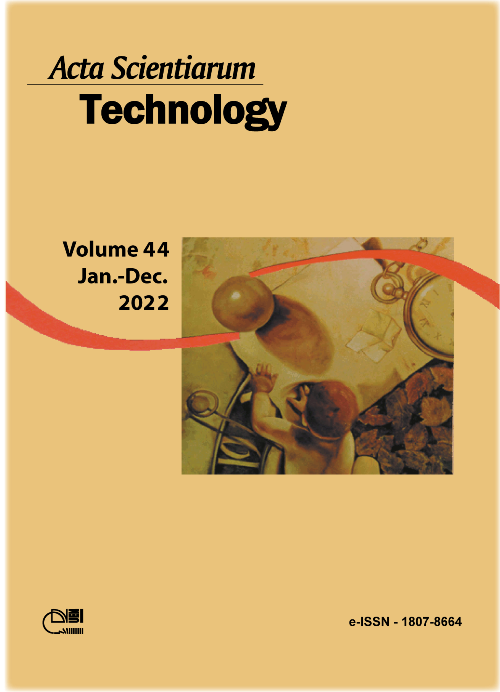Turmeric oleoresin encapsulated by spray drying in maltodextrin/gelatin and starch/gelatin blends: storage stability and water sorption
DOI:
https://doi.org/10.4025/actascitechnol.v44i1.56950Palavras-chave:
Curcuma longa L.; microencapsulation; polymer blend; curcumin; sorption isotherm.Resumo
Turmeric oleoresin is a widely used a flavoring agent and a food color with relevant nutraceutical properties. It is obtained by organic solvent extraction of turmeric (Curcuma longa L.). Microencapsulation is a good alternative to transform liquid food flavorings free-flowing powders and to improve stability of protection of compounds of interest. Thus, the aim of this study was to assess microencapsulation by spray drying of turmeric oleoresin using blends of maltodextrin-gelatin and starch-gelatin, evaluating its sorption isotherms and the storage stability at different temperatures. Turmeric oleoresin encapsulated was stored at - 20, 25 and 60°C, in the absence of light, and at 25ºC in the presence of light, and analyzed over a period of 35 days for curcumin and total phenolic contents and color. The encapsulation efficiency was 72.3% for capsules with starch-gelatin blends and 52.1% with maltodextrin-gelatin blends. Besides the greater encapsulation efficiency, starch-gelatin blends also showed greater stability during storage and retention of curcumin and phenolic compounds. Encapsulated materials were more stable during storage at - 20ºC and less stable at 25°C in the presence of light. Water adsorption of turmeric oleoresin microcapsules were well described by GAB model and the microcapsules produced with starch-gelatin blends showed high hygroscopic behavior.
Downloads
Downloads
Publicado
Como Citar
Edição
Seção
Licença
DECLARAÇíO DE ORIGINALIDADE E DIREITOS AUTORAIS
Declaro que o presente artigo é original, não tendo sido submetido í publicação em qualquer outro periódico nacional ou internacional, quer seja em parte ou em sua totalidade.
Os direitos autorais pertencem exclusivamente aos autores. Os direitos de licenciamento utilizados pelo periódico é a licença Creative Commons Attribution 4.0 (CC BY 4.0): são permitidos o compartilhamento (cópia e distribuição do material em qualqer meio ou formato) e adaptação (remix, transformação e criação de material a partir do conteúdo assim licenciado para quaisquer fins, inclusive comerciais.
Recomenda-se a leitura desse link para maiores informações sobre o tema: fornecimento de créditos e referências de forma correta, entre outros detalhes cruciais para uso adequado do material licenciado.























